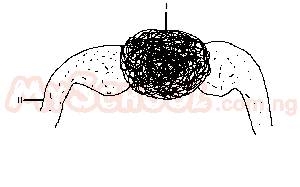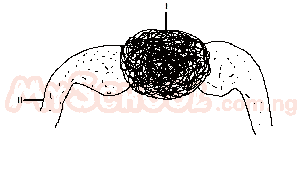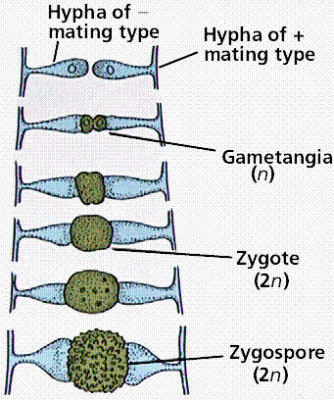Year :
1998
Title :
Biology
Exam :
JAMB Exam
Paper 1 | Objectives
1 - 10 of 50 Questions
| # | Question | Ans |
|---|---|---|
| 1. |
The nucleus is considered the central organelle of a cell because it A. contains the genetic material B. contains the nuclear sap C. is bounded by the nuclear membrane D. is located at the center of the cell |
A |
| 2. |
The procaryotic cell type is characterized by a A. complex cytoplasm in which different regions are poorly defined B. localization of different regions of the cell into tissues C. collection of organelles and macromolecular complexes D. simple cytoplasm with well defined regions |
A |
| 3. |
The natural tendency of organisms as they evolve is to A. decrease in size B. increase in number C. develop specialize structure D. feed indiscriminately |
C |
| 4. |
In snails, the hard calcareous shells are secreted by the A. radula B. ctenidium C. pneumostome D. mantle |
D |
| 5. |
 The structure labelled I is formed as a result of the fusion of A. two pairs of nuclei B. several pairs of nuclei C. a pair of nuclei D. two pairs of nucleoli |
B |
| 6. | ||
| 7. |
The ability of the cockroach to live in cracks and crevices is enhanced by the possession of A. wings and segmented body B. compound eyes C. claws on the leg D. dorso-ventrally flattened body |
D |
| 8. |
The caste of termites that lacks pigmentation is the A. King B. worker C. soldier D. queen |
B |
| 9. |
The structure that prevents food particle from escaping through the fish gills are called gill A. arches B. filaments C. rakers D. lamellae |
C |
| 10. |
A distinguished feature of mammals is the possession of A. skin B. scale C. nail D. hair |
D |
| 1. |
The nucleus is considered the central organelle of a cell because it A. contains the genetic material B. contains the nuclear sap C. is bounded by the nuclear membrane D. is located at the center of the cell |
A |
| 2. |
The procaryotic cell type is characterized by a A. complex cytoplasm in which different regions are poorly defined B. localization of different regions of the cell into tissues C. collection of organelles and macromolecular complexes D. simple cytoplasm with well defined regions |
A |
| 3. |
The natural tendency of organisms as they evolve is to A. decrease in size B. increase in number C. develop specialize structure D. feed indiscriminately |
C |
| 4. |
In snails, the hard calcareous shells are secreted by the A. radula B. ctenidium C. pneumostome D. mantle |
D |
| 5. |
 The structure labelled I is formed as a result of the fusion of A. two pairs of nuclei B. several pairs of nuclei C. a pair of nuclei D. two pairs of nucleoli |
B |
| 6. | ||
| 7. |
The ability of the cockroach to live in cracks and crevices is enhanced by the possession of A. wings and segmented body B. compound eyes C. claws on the leg D. dorso-ventrally flattened body |
D |
| 8. |
The caste of termites that lacks pigmentation is the A. King B. worker C. soldier D. queen |
B |
| 9. |
The structure that prevents food particle from escaping through the fish gills are called gill A. arches B. filaments C. rakers D. lamellae |
C |
| 10. |
A distinguished feature of mammals is the possession of A. skin B. scale C. nail D. hair |
D |

